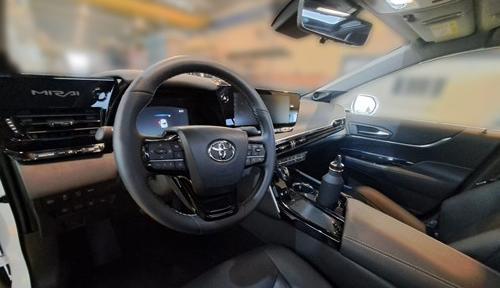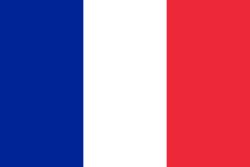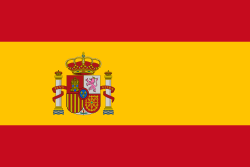
This transfer materialises Toyota's commitment to the hydrogen industry and makes ARPA a strategic partner. With the second-generation Mirai, all the companies that are working hand in hand with Toyota Spain to promote hydrogen as an energy vector will have a vehicle with greater range and greater efficiency, using the latest fuel cell technology.
Toyota Spain has delivered a second-generation Toyota Mirai to Arpa at its facilities in Zaragoza.
The award ceremony took place on 3 October, at around midday. After the presentation of the Mirai by the President and CEO of Toyota Spain, Miguel Carsi, there was a visit to the ARPA factory and a meal at the company's premises.
The vehicle was handed over to Clara Arpa, CEO of ARPA, who was accompanied by César Fernández, General Manager, Teresa Berdié, Communications Manager, and Jesús Montero, from the company's R&D department. On behalf of Toyota, in addition to Miguel Carsi, Berta Domínguez, One Team & Corporate General Manager, Sandra García, Hydrogen & Corporate Senior Manager and Jaime Pérez, Hydrogen & Corporate Senior Specialist were also present.
ARPA continues to be at the forefront of decarbonisation, its organisation is already a benchmark, and the incorporation of the second-generation Toyota Mirai increases the project to promote hydrogen as an energy vector. The incorporation of this vehicle means the renewal of its fleet, as it already had a first-generation Toyota Mirai. In Spain there are 23 vehicles, the only one outside Madrid is this one.
Another company that also has a second-generation Mirai is Sumitomo Corporation España. In addition, Enagás, Urbaser and Carburos Metálicos will also have their new Mirai in a short space of time. ARPA will be the first to have one.
With a second-generation Mirai, the companies with which Toyota Spain promotes the use of hydrogen are working to position this energy as a pillar for decarbonisation in the short and medium term, using the latest fuel cell technology in a more efficient vehicle with greater range.
ARPA is a leading company in the development of green hydrogen. Since 2015 they have been working on green hydrogen technologies, with on-site generation equipment, especially for renewable energy surpluses. As a result, they are at the forefront of engineering design and manufacturing of infrastructures for the production, storage, compression and dispensing of green hydrogen. Less than a month ago, ARPA incorporated an H2 forklift, in addition to having participated in the most cutting-edge projects in Spain, such as the dispensing of the first hydrogen train, the participation in the ZEM project (passivhaus habitability base with hydrogen cell that will be located at the Spanish army's Castilla base in Antarctica), projects in hospitals, etc.
One of the next projects, which he will carry out together with CISC, will be the opening of the first public hydrogen filling station, both at 350 Bar and 700 Bar, which will be located at one of the service stations of the Zoilo Ríos Group in Zaragoza. Together with the aforementioned Group, ARPA and Zoilo Ríos have created a new company called SHiE, responsible for supplying the hydrogen to recharge the new Mirai that they will be using. Finally, it should be noted that at ARPA it is a reality that SMEs can take firm steps towards decarbonisation.

Toyota Mirai
The new Mirai, launched in spring 2021, takes Toyota's hydrogen fuel cell technology to new horizons and also appeals directly to the emotions of its owners, both because of its design, completely different from that of the 1st generation, and because it offers a more rewarding and exciting driving experience, all with zero emissions.
Thanks to a completely redesigned fuel cell system, a very intelligent configuration and greater aerodynamic efficiency, its range can reach up to 650 km, with no emissions other than water vapour and a recharge time of between 3 and 5 minutes.
Compared to the first-generation Mirai, the new one has three hydrogen tanks instead of two, which means 22% more capacity (5.6 kg), thus offering 30% more range (650 km according to WLTP), it is 9% more powerful (134 kW / 180 DIN hp) and has a fuel cell with 12% more power (1 28 kW), while its battery is lithium-ion and has 27% higher energy density (DC 310.8 V).
In addition to all this, it offers 10% lower consumption (0.79 kg/100 km). One of the most surprising gadgets of the 2nd generation Mirai is that it compares the kilometres travelled with the purified air for an X number of runners, so that 10,000 km travelled means purifying the air that a person breathes for a year.
Let's Go Beyond
The Toyota Mirai is the spearhead of the energy shift towards a hydrogen-based society that Toyota is committed to. Under its ‘Let's Go Beyond’ vision, Toyota wants to go beyond zero-emission vehicles, with the aim of achieving a connected, zero-emission society based on hydrogen. Toyota's electrification roadmap, with its sights set on a CO2-free society, sets out how the company wants to achieve a society in which electrified technologies are the basis of mobility.
On this route towards electrification, Toyota collaborates with all kinds of companies whose objectives are also aimed at a more efficient world. Such is the case of the other five partners with whom it shares the Manoteras hydrogen refuelling station project.


